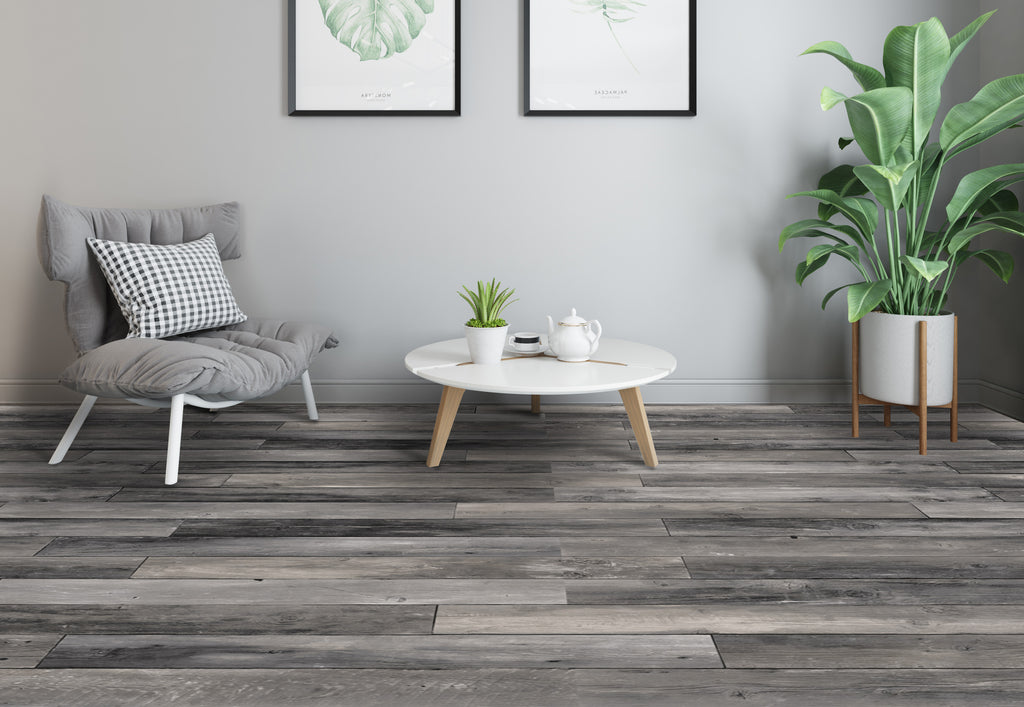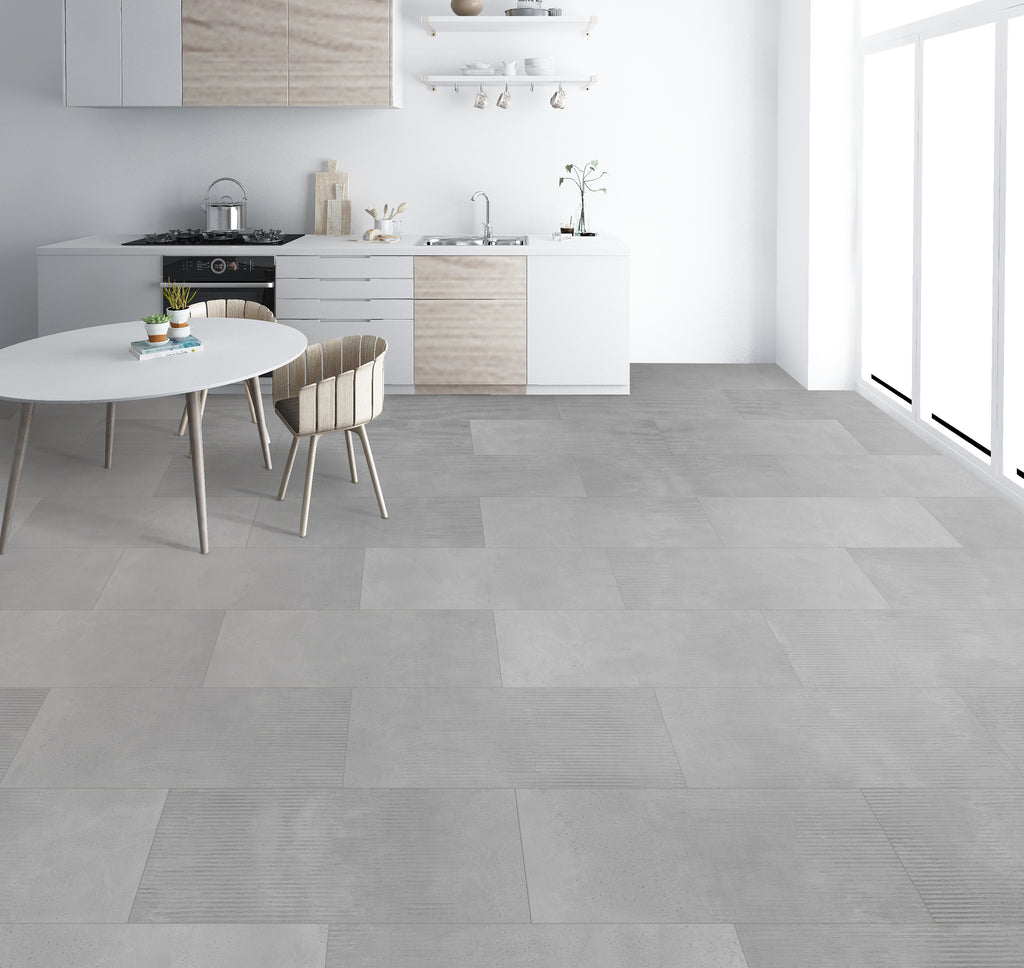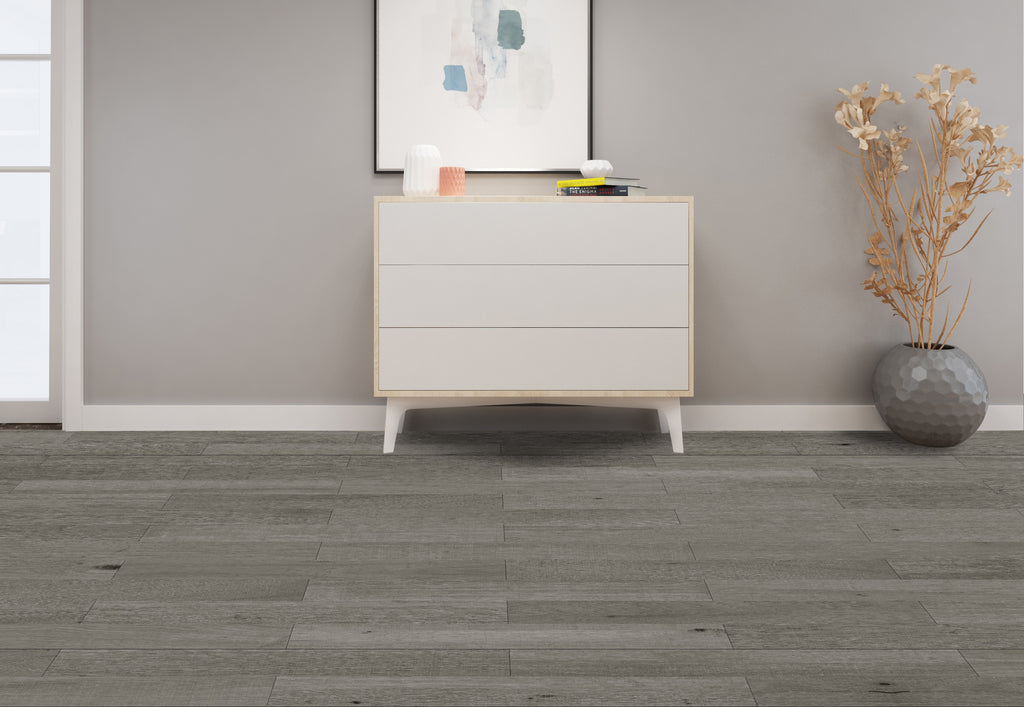Installation
Dotfloor: Pre-Installation Checklist
Installing vinyl flooring over wood flooring
How to Prep a Concrete Subfloor for Dotfloor?
Concrete is a common subfloor material, and in general, it’s easy to prepare for Dotfloor installation project. If your concrete subfloor was just poured, you’ll need to allow it to properly cure for a minimum of 60 days before your Dotfloor installation begins.
Here’s step-by-step guide to help you prep a concrete subfloor for Dotfloor vinyl:
Step 1:
Test the moisture content of your concrete subfloor. You can do this with a moisture meter, ensuring that your reading is no more than three-pounds per 1,000 square feet per 24 hours. Another option is to tape a piece of your vinyl flooring to the concrete for 72 hours. If the flooring comes up easily, you’ll need to reduce the moisture content of the room via dehumidification and repeat the test.
Step 2:
Thoroughly clean your subfloor. Start by sweeping up any debris. You can also use a wet/dry vacuum for a deep cleaning. Just make sure your floor dries completely before moving to the next step.
Step 3:
Check your subfloor to make sure it is level. Test multiple areas using a large level. Note any low or high spots.
Step 4:
Level your floor by filling low spots with patching compound and a putty knife. Use medium-grit sandpaper to smooth the area, cleaning thoroughly when you’re done.
Step 5:
Use a belt sander to reduce high spots. Clean any debris to ensure a spotless subfloor.
Step 6:
Begin your luxury vinyl flooring installation once your subfloor is clean, dry and level.
Pro Tip
You’ll need to install a vapor barrier if you’re using floating vinyl flooring. Use this guide to learn more about the differences between glue down and floating vinyl plank flooring.
Continue readingCan I Install Dotfloor on an Existing Floor?
Some people choose to install luxury vinyl flooring over an existing floor to save both time and money. Vinyl material that’s in place, as well as tile flooring, are generally the easiest to work with.
In many cases, a new installation without removing your existing floor is possible, but the process is somewhat different. How to prepare your floor will also depend on the existing material you have.
Here are a few things to know about installing luxury vinyl flooring over an existing floor:
Your existing floor needs to be as clean as possible. Use an appropriate household cleaner. You may want to repeat the cleaning process more than once.You’ll need to fill cracks between existing vinyl flooring materials with patching compound. Cement-based mixes work best for leveling grout lines when dealing with existing tile floors. Sand these areas to ensure a smooth, level surface all over.Moisture content matters when installing luxury vinyl flooring over existing materials. While your set floor is likely to be dry, patching compound and cement-based mixes must also adhere to moisture requirements. Use a moisture meter or perform the 72-hour tape test with a piece of your new vinyl flooring.
Continue readingHow to Measure a Floor for a Flooring Installation
You’ve researched your options, pored through catalogs, and examined tile samples. The search is over and you’ve finally found the perfect flooring for your home. The last step before placing your order is to measure the floor. This is a crucial part of the process because an order that’s too small will leave you scrambling to match the product properly, while one that’s too large is a waste of renovation funds. Please follow these steps to measure your floor space properly.
How to Accurately Measure a Floor
Step One: Determine the Shape and Layout of the Room
Square or rectangular rooms are the easiest to measure. If you’re working with a space that’s rounded or triangular, you’ll need a different formula for your measurements. Most spaces, however, are comprised of a series of rectangles when you look at them the right way. If your space isn’t a single open rectangle, break it down into a series of smaller rectangles. Sketch a floor plan of the room and record your measurements for each area.
Remember to account for obstructions like kitchen islands. For these, you can measure a floor as a large rectangle on either side and smaller squares or rectangles above and below. To help you visualize the different areas you’re measuring, lay masking tape on the floor. Just remember to include the width of the tape in your measurements.
Step Two: Measure and Calculate
For each section of the room, you need to measure the width and length. In rectangular areas, you can calculate square footage easily by multiplying these measurements. If your room includes several squares or rectangles, multiply the length by the width for each one and add the resulting numbers to get the total square footage of the room.
If your space is triangular, multiply the length by the width and divide this by two. Circular spaces are more difficult. For a circular room, you can calculate the area of half the circle using the equation (3.14 x Radius x radius)/2.
Step Three: Account for Your Waste Factor
You should add a certain percentage to your order to account for waste. This will give you extra flooring to properly accommodate corners or angles. It also gives you a safety buffer for any errors or breakage that may occur during the installation process. A professional can work with an extremely small waste factor, but if you’re planning on a DIY flooring installation, you should include a waste factor of at least 7 percent.
If your room features a complicated shape with several obstructions to work around, increase your waste factor to 10 percent. For a triangular room you’ll need a waste factor of 15 percent to account for the diagonal lines.
The final calculation that includes your room’s square footage and appropriate waste factor will let you know how much flooring to order. Before you begin any installation process, unpack your entire order, inspect it for accuracy, and lay the flooring out to make sure you have the right fit. With the proper calculations, you should have adequate floor tiles or laminate pieces for your exciting new flooring job.
Continue reading





